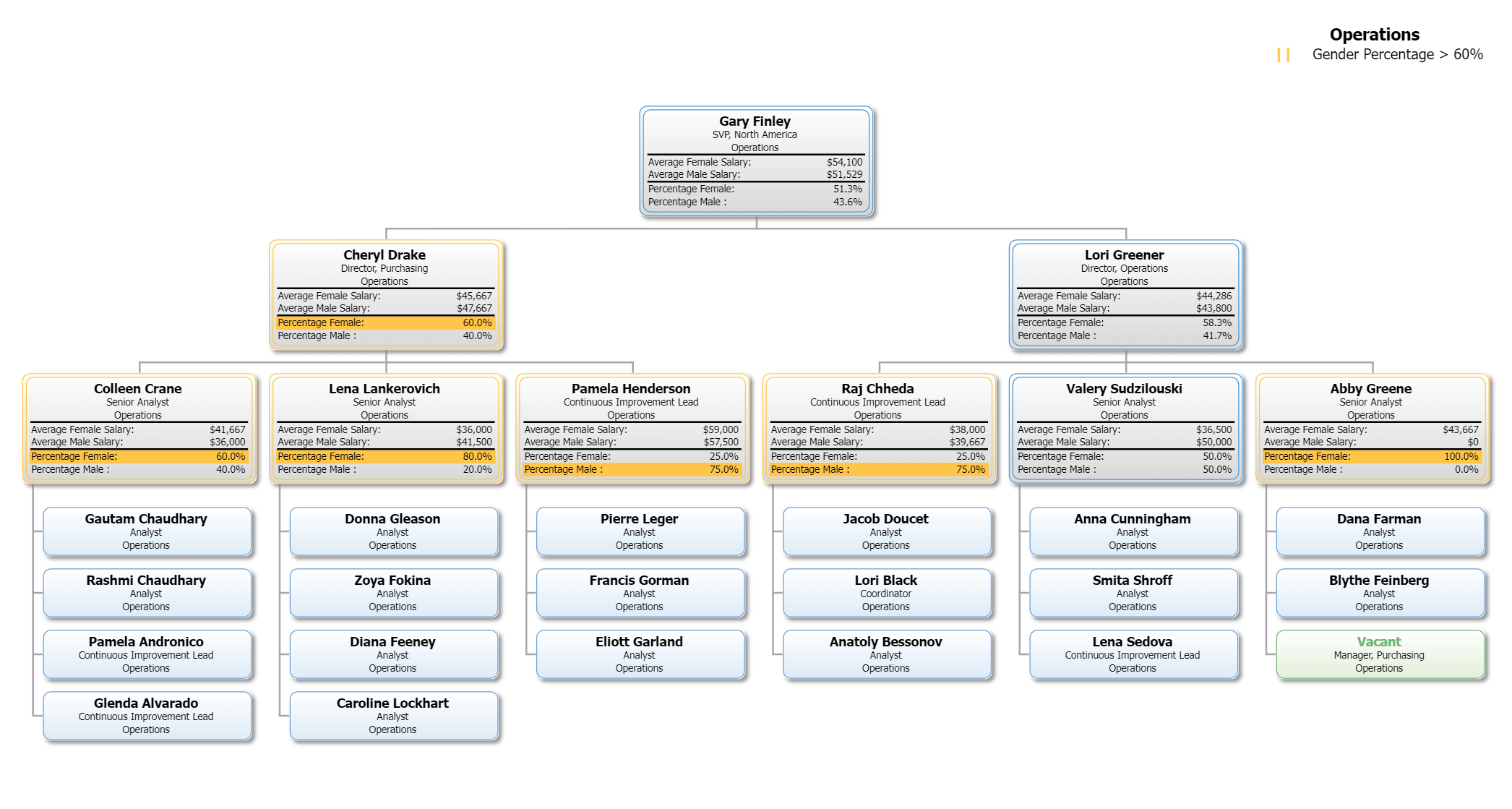OrgChart Team
April 7, 2021
While the world sees incremental shifts toward more fair and welcoming workplaces, shortcomings in gender pay equity pervade in the global workforce. The global pay equity gap is closing so slowly…

While the world sees incremental shifts toward more fair and welcoming workplaces, shortcomings in gender pay equity pervade in the global workforce. The global pay equity gap is closing so slowly the United Nations estimates it will take 257 years to close it — that is, if progress steadily continues at its glacial pace. Women earn 77 cents for every dollar men earn for work of equal value. That gap is even wider for women with children and women of color.
Led by supersonic voices like the soccer star Megan Rapinoe, along with the rest of her champion U.S. Women’s Soccer team, the fight for equal pay for women is gaining visibility but not gaining the swift progress necessary for true equality. If some of the most prominent professional women in the world who win games in one of the highest-grossing sports in the world are still fighting fiercely to receive equal pay, what does that mean for average women working average jobs?
A Pew Research Center report on gender pay inequality shows that little has changed since the 1980s to narrow the gap between men’s and women’s salaries. In 2018, women earned 85 percent of what men earned, according to the Pew analysis. Multiple studies by McKinsey & Company reveal just how severely women are underrepresented at every level of the corporate ladder and only 38 percent of companies even set targets for gender representation.
Concentrated in lower-paid, lower-skill work with greater job insecurity, and carrying out at least two and a half times more unpaid household and care work than men, women are trapped in the bottom rungs of earnings. But even women doing equal work, armed with equal education levels and expertise, are earning less than men.
The disparity for black and Latina women of color is even more severe. In the U.S. in 2019, Latina women earned only $0.55 for every dollar paid to white, non-Hispanic men. Black women, on average, earned $0.63 of that dollar, and Native American women earned just $0.60. Asian American and other Pacific Island women fared just a little better, at $0.85 on the dollar.
The New York Times paints a starker comparison: Since the pandemic, “Black women would have to work until Aug. 3, 2021, to earn what men made in 2020. For Latina women, the date doesn’t come until Oct. 21.”

OrgChart Gender Pay Equity Analysis
The good news is employers and governments around the world are intentionally setting aggressive goals and making progress. SHRM reports that the percentage of employers conducting a gender-based pay equity analysis rose to 56 percent in 2020, up from 35 percent in 2016.
McKinsey & Company’s research further underscores inequality, revealing a striking underrepresentation of women at every corporate level. Only 38% of companies even set gender representation targets.
Adding to the challenge, women are frequently funneled into lower-paying, lower-skilled jobs with precarious job security. Even when performing equal work, possessing equivalent educational credentials, and demonstrating equal competence, women still earn less than men.
Fortunately, there’s light at the end of the tunnel. Employers and governments worldwide are setting ambitious goals to tackle the pay gap. A 2020 SHRM report reveals that 56 percent of employers are now conducting a gender-based pay equity analysis, a significant rise from 35 percent in 2016.
With OrgChart, companies can now precisely analyze and visualize pay equity. OrgChart allows you to delve into specific departments or geographies within your organization, pinpointing areas ripe for improvement. The insights gleaned can be conveniently exported into formats like PowerPoint, Excel spreadsheet, or interactive PDF to best suit your audience.
Taking proactive steps like conducting regular gender-based pay salary analyses is instrumental in addressing this enduring workplace disparity. Unlock the potential of your org chart and make your first step toward a fairer future. Request a demo today to see how OrgChart can help redefine your workplace diversity.

Restaurant Hierarchy Chart: Structure & Roles…
Restaurants are arguably the busiest businesses out there, with servers, cooks, managers, and executives working hard to ensure every guest has a stellar…
Read Article
Managing Positions in a Company Chart: Strategies for Modern HR Teams…
As companies grow beyond 100 employees, managing organizational structure becomes exponentially more complex. HR professionals need an advanced, dynamic…
Read Article
Healthcare Organizational Chart: Structure, Examples & How to Build One…
Explore the power of People Analytics. Unlock data-driven HR strategies to optimize your workforce with our tools.…
Read Article